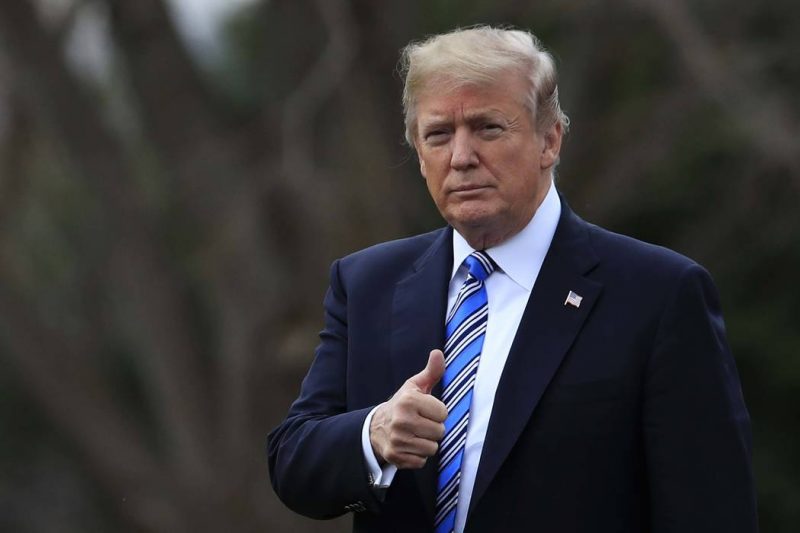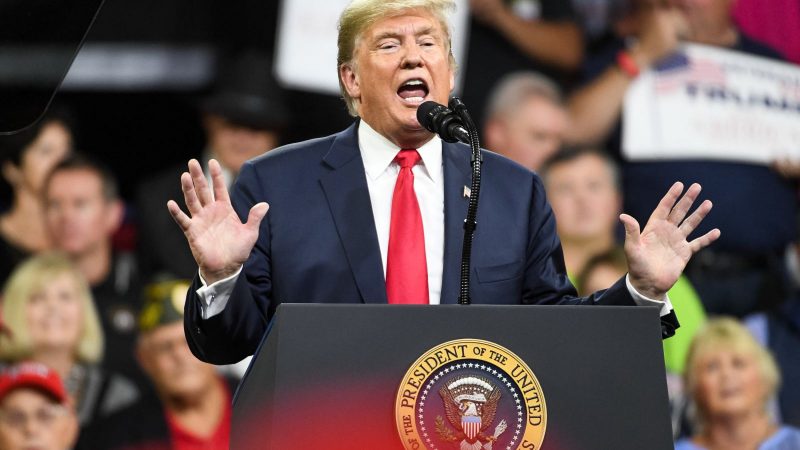Since Donald Trump became president many of his subordinates have tried to subvert his policies. Instead of implementing Trump’s idea and preferences they have tried to implement their own. Some Have done so because they believed that it is the “right thing to do” while others have ignored Trump’s wishes to play their own game.
A recent example can be found in a Washington Post Ukrainegate story:
Trump’s conversations with Putin, Hungarian Prime Minister Viktor Orban and others reinforced his perception of Ukraine as a hopelessly corrupt country — one that Trump now also appears to believe sought to undermine him in the 2016 U.S. election, the officials said.
…
The efforts to poison Trump’s views toward Zelensky were anticipated by national security officials at the White House, officials said. But the voices of Putin and Orban took on added significance this year because of the departure or declining influence of those who had sought to blunt the influence of Putin and other authoritarian leaders over Trump.
…
American policy has for years been “built around containing malign Russian influence” in Eastern Europe, a U.S. official said. Trump’s apparent susceptibility to the arguments he hears from Putin and Orban is “an example of the president himself under malign influence — being steered by it.”
The president does not like how the ‘American policy’ on Russia was built. He rightly believes that he was elected to change it. He had stated his opinion on Russia during his campaign and won the election. It is not ‘malign influence’ that makes him try to have good relations with Russia. It is his own conviction and legitimized the voters.
Trump’s policies look chaotic. But one big reason for that is that some of his staff, like the ‘U.S. official’ above, are trying to subvert them. They have tried and still try to cage him in on nearly every issue.
When Trump then wields his Twitter sword and cuts through the subversion by publicly restating his original policies the look from the outside is indeed chaotic. But it is the president who sets the policies. The drones around him who serve “at his pleasure” are there to implement them.
Instead they have tried (and try) to make their own ones:
White House and State Department officials had sought to block an Orban visit since the start of Trump’s presidency, concerned that it would legitimize a leader often ostracized in Europe. They also worried about Orban’s influence on the U.S. president.
“Basically, everyone agreed — no Orban meeting,” said a former White House official involved in internal discussions. “We were against it because [we] knew there was a good chance that Trump and Orban would bond and get along.”
The effort to keep distance between Trump and Orban began to fray earlier this year with the departures of senior officials and the emergence of new voices around the president. Among the most important was Mulvaney, who became acting chief of staff in January and was seen as sympathetic to Orban’s hard-right views and skepticism of European institutions.
One “senior official” who tried to sabotage the Orban visit was Fionna Hill who until recently served as the Russia analyst at the National Security Council.
One wonders if Mrs. Hill ever read her job description. The people in the NSC do net get hired to implement their own policy preferences. The task of the National Security Council is to “advise and assist” the president and to “coordinate” his policies within the administration. That’s it.
The same rules apply to the Pentagon and other agencies.
Aaron Stein points out that those aides who disregarding the declared policy of the president are responsible for the current chaotic retreat from Syria:
Trump has been clear about his intentions in Syria. As he told the world in April 2018, after years of fighting foreign wars, in his view it was time for the United States to withdraw from Syria, passing responsibility for the mission to hold territory taken from the Islamic State to regional states.
I was listening, and wrote in War on the Rocks that the longer the president’s own staff continued to treat the world’s most powerful man like an infant, the more likely it became that he would simply order a hasty withdrawal.
This chaotic U.S. exit from Syria was obviously coming, for anyone paying attention to the opinion of the man who matters most in the United States: the president.

For over a year, it was obvious Trump wanted to leave Syria and, as I wrote in April 2018, Trump “has made his preferences for U.S. policy in the Middle East clear” and it was time “for his national security staff to listen to him and to devise a sequential drawdown policy that fits with the spirit of the president’s demands, but takes deliberate and uncomfortable steps to protect U.S. interests.” This did not happen.
Rather than plan and begin to implement a coordinated withdrawal, the president’s appointed envoy for Syria and the Department of Defense worked to ensure Washington could stay, and ignored the reality that Trump would eventually order an American withdrawal.
Such delusions have not served the United States and its friends well.
The lack of planning for the option the commander in chief had already decided on led to the current mess. The Pentagon practically sabotaged trump’s announced policies by continuing to build up bases in Syria and by falsely telling the Kurds that the U.S. would stay.
It should instead have planned and prepared for the announced retreat from the country.
One can clearly see that this current withdrawal was not prepared for, neither politically nor militarily, in any orderly way.
Yesterday the Pentagon said it would pull the troops out of Syria but station them nearby in west Iraq. But no one had asked the Iraqi government what it though of that idea. The inevitable outcome is that Iraq now rejects it:
U.S. forces that crossed into Iraq as part of a pull-out from Syria do not have permission to stay and can only be there in transit, the Iraqi military said on Tuesday.
…
The Iraqi military statement contradicted the Pentagon’s announcement that all of the nearly 1,000 troops withdrawing from northern Syria are expected to move to western Iraq to continue the campaign against Islamic State militants and “to help defend Iraq”.
“All U.S. forces that withdrew from Syria received approval to enter the Kurdistan Region so that they may be transported outside Iraq. There is no permission granted for these forces to stay inside Iraq,” the Iraqi military said.
There was also the idea that some 200 soldiers would be left behind in Syria to deny the Syrian government access to its own oil fields in east Syria.
Not only would this be obviously illegal but nobody seems to have given a thought on how the logistics for such remote unit could be sustained.
The oil fields are geographically large and the company strength unit would have to be dispersed into tiny outposts within a hostile country and resupplied over unsecured roads. To defend them from surprise attacks the U.S. would need to put combat air patrols above them for every hour of each day.
One hopes that the Pentagon and State Department recognize that the high political and financial costs of such a deployment is not justified for making a minor political point that will not change the inevitable outcome of the war.
Trump ordered that all U.S. troops leave Syria. An illegal occupation of Syria’s oil fields would keep the U.S. in Syria but in an clearly indefensible position. Whoever came up with or supported that idea needs to be fired.
Here is a sign that the Pentagon has finally recognized that its utter lack of planning for the implementation of Trump’s decision to leave Syria resulted in a bad outcome. It is now trying to avoid to be (again) be caught with its pants down with regards to Afghanistan:
The Pentagon recently began drawing up plans for an abrupt withdrawal of all U.S. troops from Afghanistan in case President Donald Trump surprises military leaders by ordering an immediate drawdown as he did in Syria, three current and former defense officials said.
…
Ending wars like the one in Afghanistan was one of Trump’s chief campaign promises in 2016, and administration officials have privately expressed concern that as the 2020 election approaches, he’ll be more likely to follow through with threats of troop withdrawal, as he did last week in Syria.
Trump has made clear to his advisers that he wants to pull all U.S. troops out of Afghanistan by the 2020 election, NBC News reported in August.
Trump made his decision in August but the Pentagon only now reacts to it. That is too slow.
Trump should have been and should be more rigorous with his staff. Those who sabotage his policies need to be fired early and often. It would make his polices look much less chaotic than they currently seem to be.
This article was originally published by Moon Of Alabama
The 21st Century

